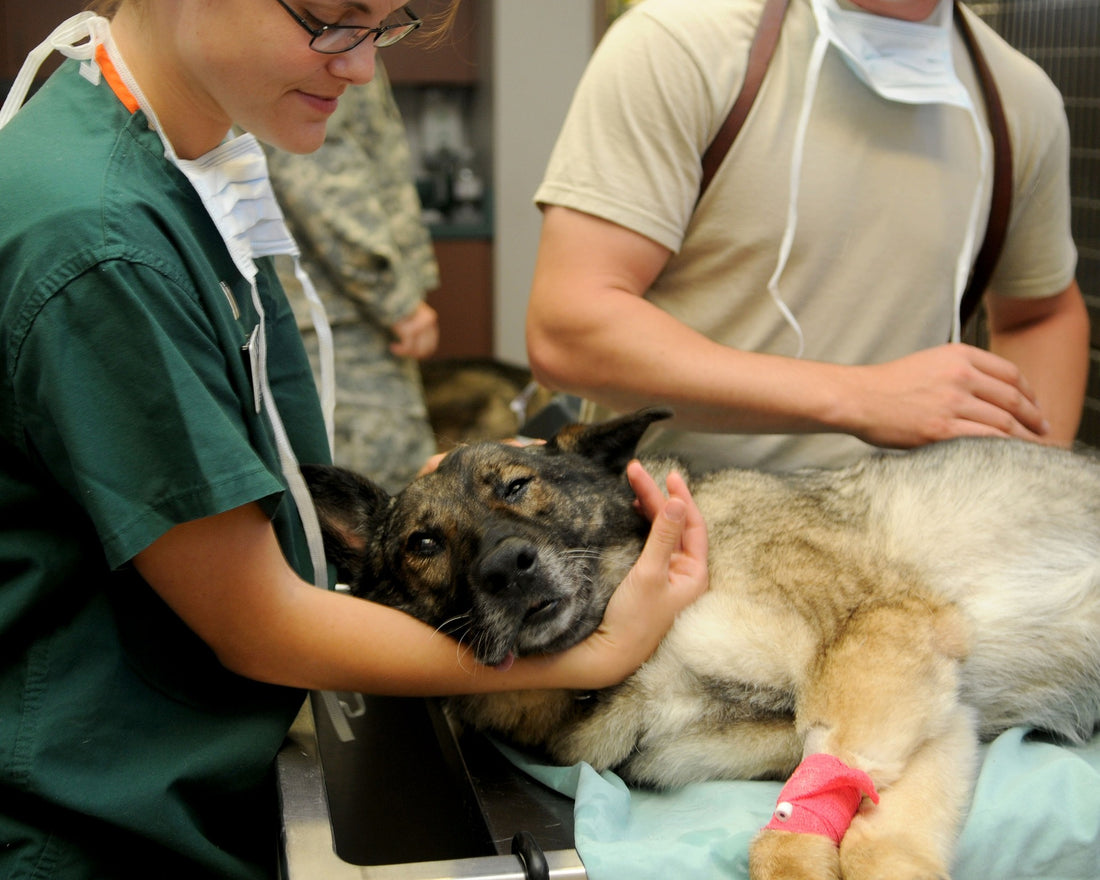
Preparing for the Unexpected: Tips for Handling Medical Emergencies with Your Dog
Partager
As a pet owner, it's important to be prepared for medical emergencies that may arise with your dog. While we hope that our furry friends never need emergency medical care, it's important to have a plan in place just in case. Here are some tips to help you be prepared for a medical emergency with your dog:
- Know your veterinarian's contact information: Keep your veterinarian's phone number and address in a readily accessible place, such as in your phone or on your fridge. In addition, make sure you know the location and hours of any emergency veterinary clinics in your area.
- Know your local emergency Veterinarian's put their contact information in your phone.
- Create a first aid kit: Put together a first aid kit for your dog, including items such as gauze, antiseptic wipes, a thermometer, and a muzzle. You can purchase pre-made kits or put one together yourself.
- Learn basic first aid skills: Take a first aid course for pets or do some research online to learn basic first aid skills, such as how to control bleeding or perform CPR.
- Keep important documents on hand: Keep a copy of your dog's vaccination records, medical history, and any medications they are taking in a folder or binder that you can easily grab in case of an emergency.
- Have a plan for transportation: If your dog needs emergency medical care, have a plan in place for transportation. This could be as simple as having a carrier or leash readily available, or as complex as having a plan for who can drive you and your dog to the vet.
- Be aware of common signs of illness or injury: Familiarize yourself with common signs of illness or injury in dogs, such as vomiting, diarrhea, lethargy, or difficulty breathing. If you notice any of these signs, don't hesitate to seek medical care for your dog.
When a dog is injured or in pain, they may not act like themselves. Even the most friendly and docile dog can become agitated and may even resort to biting if they feel threatened or scared. This is why it's important to approach an injured dog with caution and to be aware of the potential for dog bites. Before administering any first aid, it's important to take steps to ensure your own safety, such as muzzling the dog if necessary or asking for help from a professional. It's also important to be aware of the signs of pain and distress in dogs, such as growling, whimpering, or snapping, and to take appropriate action to avoid any potential injury. By being prepared for the unexpected and taking steps to ensure your own safety, you can help to ensure the best possible outcome in a medical emergency with your dog.
Note: Using a makeshift muzzle should only be done as a last resort in emergency situations where a dog may be in pain or distress and may bite.
To make a makeshift muzzle with gauze, follow these steps:
-
Find a long strip of gauze or a soft cloth that is at least 2-3 feet in length.
-
Hold the gauze with one end in each hand, and fold it in half to create a loop.
-
Slide the loop over the dog's nose, and position it so that it is snug but not too tight.
-
Twist the gauze once, and bring the two ends behind the dog's ears.
-
Cross the ends behind the dog's head, and bring them back around to the front.
-
Tie the ends into a knot just below the dog's chin, making sure that it is snug enough to keep the muzzle in place but not too tight that it restricts the dog's breathing.
-
Check to make sure that the muzzle is secure and that the dog cannot remove it.
Remember, a makeshift muzzle should only be used in emergency situations and for a short period of time. Seek professional veterinary care as soon as possible after using a makeshift muzzle.
By following these tips, you can be better prepared for a medical emergency with your dog. Remember, in an emergency, it's important to remain calm and seek medical care as soon as possible. With your preparation and quick action, you can help your furry friend get the care they need.